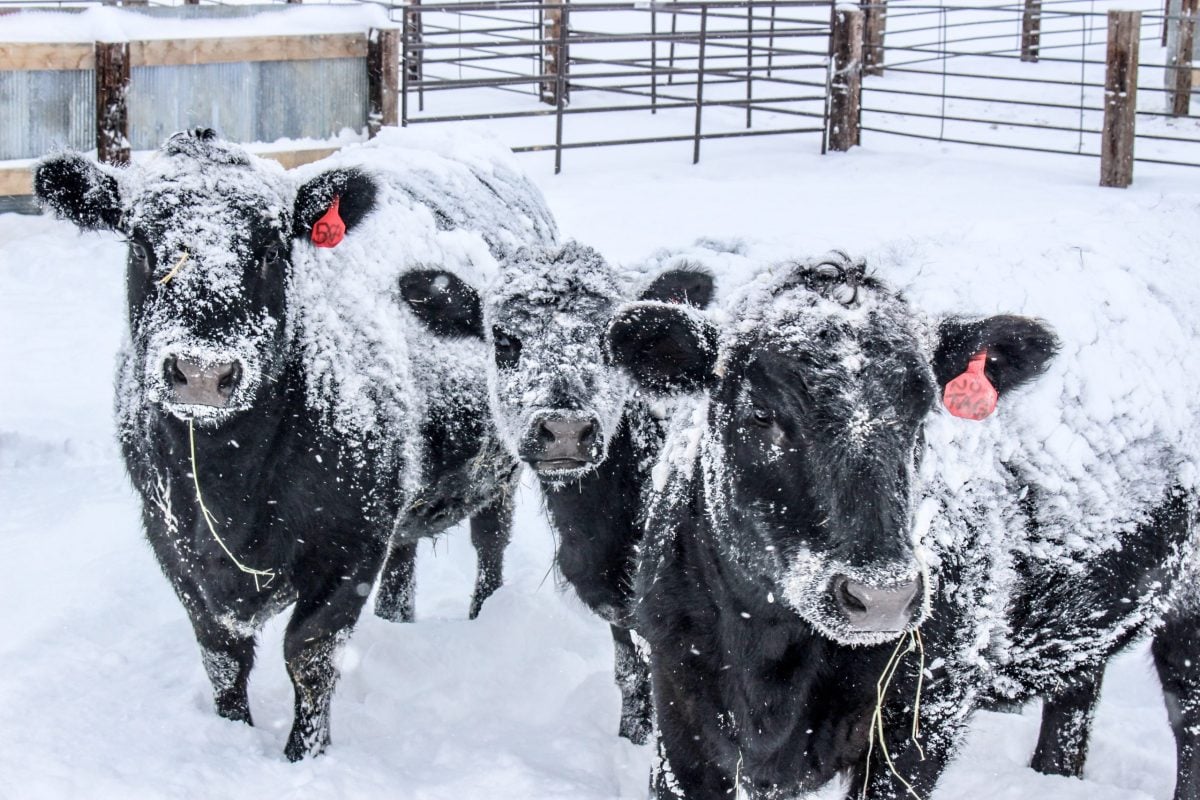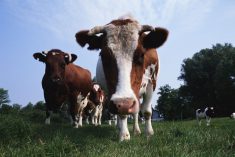Chicago | Reuters — Chicago Mercantile Exchange lean hogs contracts gained for a third straight session, partly on speculation that early wintry weather seeping into the U.S. Midwest could disrupt hog production, traders said.
Heavy snowfall tends to snarl transportation of livestock while prolonged periods of extreme cold tend to slow animal weight gains and keep pigs confined indoors to conserve heat.
Packers may have to raise bids for hogs to convince producers to open doors to their swine buildings, said independent livestock futures trader Dan Norcini.
Read Also

U.S. livestock: CME cattle futures rise on expectations of tight supplies
Chicago | Reuters – Chicago Mercantile Exchange cattle futures climbed on Wednesday as market players anticipated tighter cattle supplies in…
CME hogs garnered more support from sentiment that the two-week decay in market-ready or cash hog prices may be about to end soon.
The U.S. Department of Agriculture’s Monday morning direct cash hog prices were unavailable. Hogs in the Midwest traded mostly steady, according to regional hog dealers.
Consumers may substitute high-priced beef for relatively low-cost pork, which could support cutout values.
USDA data showed the morning’s wholesale pork price, or cutout, slipped 36 cents per hundredweight (cwt) from Friday at $94.38 (all figures US$).
Some packing plants will be closed on Tuesday in observance of the Veterans Day holiday, which could take roughly 30,000 hogs out of that day’s kill, industry analysts said.
December ended 0.775 cent per pound higher at 89.55 cents, and February 0.675 cent higher at 89.1 cents.
Live cattle rise
CME live cattle futures drew support from buy stops and the wholesale beef price rebound, traders said.
December closed up 0.325 cent/lb. at 167.125 cents, and February 0.15 cent higher at 168.525 cents.
Monday morning’s choice wholesale beef price rose $1.26/cwt from Friday to $250.37. Select jumped $1.82 to $239.89, the USDA said.
Packers cut kills to improve their margins, boost wholesale cutout values and limit spending for slaughter-ready or cash cattle.
On Monday, packers processed 108,000 cattle, down 5,000 from last week, based on USDA data.
A week ago, cash cattle in the U.S. Plains fetched mostly $167/cwt, $1 lower than the previous week.
Beef packer margins for Monday were a negative $115.30 per head, compared with a negative $109.70 on Friday and a negative $111.85 a week earlier, according to Colorado-based analytics firm HedgersEdge.com.
This week, more cattle may be available after packers bought sparingly in recent weeks, which may again weigh on cash prices.
Aside from potential problems trucking cattle, many of the animals, and ranchers, have already prepared for the anticipated change in weather, industry experts said.
CME feeder cattle drew support from modest live cattle futures buying and steady to $2/cwt higher prices for feeder cattle at local markets.
November closed 0.5 cent/lb. higher at 239.025 cents, and January at 232.75 cents, up 0.3 cent.
— Theopolis Waters reports on livestock futures markets for Reuters from Chicago.













